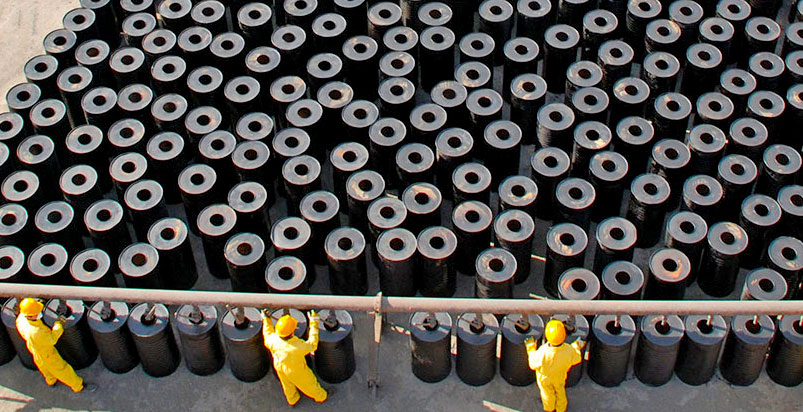
Pitch is known to most of people. It has two familiar properties: adhesion and water tightening. Pitch is derived from petroleum and is used for preparation of asphalt. This is the general outlook of the pitch which covers only the apparent particulars.
From viewpoint of the experts, pitch is a mix of various hydrocarbons which can be separated and classified by particular methods to determine the properties of each (Using IR, NMR, and GPC). Results of such analysis highly depend on the separation method and type of the solvents used. That’s why there are numerous definitions for the word pitch and its unconditional use.
ASTM defines the pitch as below
A group of materials high in adhesion, dark or black in color, (solid, semi-sold or viscous), of natural source or manufactured from high molecular weight hydrocarbons solved in carbon disulphide.
Structure of the Pitch
Physically, pitches are homogenous materials, but chemically, they are heterogeneous and consisting of different chemical compounds. None the less, all the pitches have some common features and properties. Atomic structure of pitches which are determined by flaming or other methods, show that about 90% of pitch is formed of carbon and hydrogen atoms and most of pitches contain nitro gene, sulfur, and oxygen in different but low ratio. Traces of other atoms, like various metallic atoms are also there, having clearly no effect on properties of pitch. Pitch or tar materials, are varying mix of various hydrocarbons, which come together in different saturated, non-saturated, aromatic, non-aromatic, polar and non-polar forms. In addition to carbon and hydrogen, some of the hydrocarbons have other elements (Hetero Atoms) in their structure.
Different Sorts of Pitch
Generally, pitches can be divided into three groups:
- Natural Pitches (Native asphalts or natural bitumen)
- Coal tar pitches
- Petroleum asphalts
Natural Pitches (Native asphalts or natural bitumen)
Natural Pitches are a group of materials formed in nature under natural factors and due to elapse of time. They can be used without needing distillation, and are so diverse from viewpoint of composition and properties.
Coal tar pitches
Remnant of coal distillation, which are dark and hard, shining, and fast loser of viscosity when heating. Their melting temperature depends on the method they have been formed.
Petroleum asphalts
Group of pitches whose origin is crude oil. The crude oil conveyed through thick pipelines from the extraction center to the refinery. They are refined at the refinery and changed into various products such as petroleum asphalt after undergoing different operations. In other words, petroleum asphalts are solid or semi-solid pitches which are gained directly from the distillation of the crude oil or by other additional operations like aeration.
Observing the high amount of the production and consumption compared to the other types of pitches, and its numerous applications, here we mentioned in brief the process of producing petroleum pitch:
Direct Derivation from the Crude Oil
Distillation, a basic process in refining the crude oil
The first stage of distillation is carried out under atmospheric pressure, and normally includes heating the crude oil up to a temperature of about 650-800 F in a furnace, then injecting it to a separation column. So, the lighter parts ascend the tower top and are called tower top products and the heavy parts remain in the bottom which are called atmospheric remain. This is the first stage of the entire refining process. Many crude oils contain high portions of parts with high melting point, which cannot be distilled in an atmospheric distillation unit. To separate these part for producing the pitch with pre-determined specifications, a second separation tower is employed, which works in vacuum. Remaining of this process is called “straight-run asphalt”.
Pitches Classification and Nomenclature
Among the various tests defined for pitch in the ASTM, BS, DIN, API, etc. standards, two or three ones are more prevalent and ease of their measurement has caused their wide application for nomenclature and classification of different pitches.
These tests, which can determine the physical and inherent properties of pitches, include:
-Softening point, in centigrade
-Penetration in 0.1 of mm and viscosity
-Viscosity in Poises or centistokes
Penetration Grade Pitches
The pitches gained from the distillation tower of the refinery or slightly aerated ones, are called Penetration grade or Pen Pitches, and their nomenclature is based on the range in which the pitch penetration lies in. For instance 60/70 Pitch is the one whose penetration degree lies between 0.60 and 0.70 mm.


